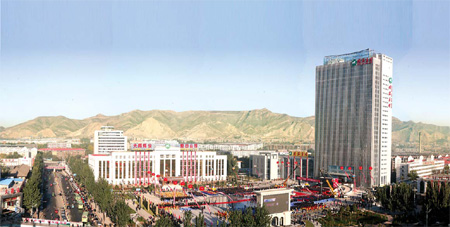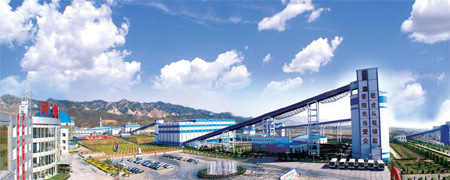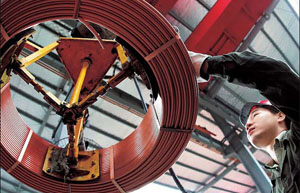Energy
Tashan park model is a leader in China's coal industry
By Zhang Zhao (China Daily)
Updated: 2010-11-16 16:34
 |
Large Medium Small |
|
 |
|
Office buildings of Datong Coal Mine Group in Datong, Shanxi. [Photo/China Daily] |
|
 |
|
Office buildings of Datong Coal Mine Group in Datong, Shanxi. [Photo/China Daily] |
North China's Datong Coal Mine Group is establishing the Tashan Circular Economy Park (TCEP) to act as a model of a circular economy.
Construction on the park, which is located about 30 kilometers south of the city of Datong, in Shanxi province, started in 2003. It was the first park of its kind in China and was meant to be a local industry leader in the areas of equipment, technology and management.
The province called it a pilot project for a circular economy park. TCEP runs 13 low energy, low emissions, and high-efficiency projects.
This is a radical shift from the way things were just several years ago.
Datong Coal has more than 80 coal mines and it was a large mining operation with heavy amounts of pollution and very efficient, something that was going out of fashion. And there were the problems, such as land subsidence, waste material catching fire, and degraded or declining amounts of surface water.
So, TCEP was one of the ways they could address this, with a circular economy, a model for economic growth that highlights higher efficiency of resources and pollution control.
The park was not cheap. It cost 20.4 billion yuan ($3.05 billion) but it has a total floor space of nearly 4 square kilometers. And it has two fully operating coal mines, with a total annual production capacity of around 25 million tons.
This forms a complete industrial chain: power plants, coal sorting plants, and water treatment facilities, where sewage and industrial waste water can be recycled so there are "zero emissions" with the waste water.
The power plants replaced a shocking number of boilers - 240 - that were used just for the heating alone, and provide heating and electricity for a 5.5-million-sq-m area. This cut sulfur dioxide emission by 4,000 tons annually and dust emissions by nearly 7,000 tons.
The solid waste, including rocky coal rubble and coal dust discharged from the pit-mouth power plant, is fully reused for building materials like bricks.
Thanks to this waste recycling, the output value of the park last year tripled compared with before the park was established to 8.7 billion yuan. This is expected to reach 17 billion yuan this year.
Tashan's achievements have shown the possibilities of "green circulation", park administration officials said.
Now, the Tashan model is "leading the development of the nation's coal industry" and can be applied nationwide, said China National Coal Association officials.
As if to prove its case, Datong Coal decided to copy the Tashan model at 11 of its coal mines, each with a several-million-ton production capacity. They also plan to build three similar economy parks in the province, at a total cost of around 60 billion yuan.




